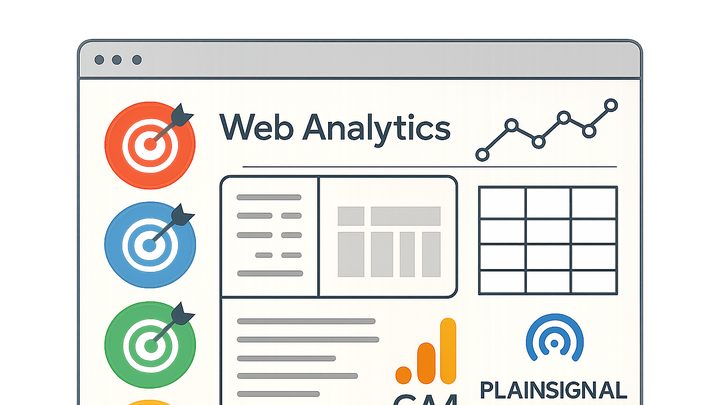Published on 2025-06-28T00:13:18Z
What is Audience Targeting? Examples for Audience Targeting
Audience targeting is the practice of dividing a broader user base into specific segments based on shared attributes, behaviors, or preferences. This process enables businesses to deliver personalized content, optimize marketing spend, and improve user experiences. In analytics, it helps identify high-value groups and tailor messages for better engagement and conversion. Advances in privacy regulations and cookie restrictions have elevated the importance of first-party data and cookieless approaches for accurate targeting. Tools like GA4 and PlainSignal offer robust frameworks to define, track, and activate audience segments across channels.
Audience targeting
Segmenting users based on shared traits and behaviors to deliver personalized marketing and product experiences.
Why Audience Targeting Matters
Audience targeting transforms generic analytics data into actionable insights by focusing on subsets of users with common characteristics. This approach improves engagement by delivering relevant content, boosts conversion rates through optimized messaging, and reduces wasted ad spend. In an era of data privacy and cookie restrictions, accurate audience identification ensures compliance while maintaining personalization. Platforms like GA4 and PlainSignal can power these efforts by capturing user properties and events to construct meaningful segments.
-
Enhanced engagement
By tailoring content to specific audiences, you can increase click-through rates and time on site.
-
Improved conversion rates
Targeted messages resonate better, leading to higher conversion rates and ROI.
-
Efficient budget allocation
Focusing on high-value segments reduces wasted spend on uninterested users.
Core Methods of Audience Targeting
Several targeting strategies help you reach the right people at the right time. These methods range from broad demographic filters to advanced machine-learning based lookalike modeling. The choice of method depends on your goals, data availability, and privacy considerations.
-
Demographic segmentation
Grouping users by age, gender, location, or other demographic attributes.
-
Behavioral segmentation
Targeting based on past actions like pageviews, clicks, and purchase history.
-
Contextual targeting
Serving messages based on the content or environment the user is currently engaging with.
-
Lookalike audiences
Leveraging existing high-value audiences to find similar users using machine learning.
Implementing Audience Targeting with GA4 and PlainSignal
Modern analytics platforms provide built-in tools for building and activating audience segments. GA4 offers robust audience definitions tied to events and user properties, while PlainSignal provides a privacy-first, cookie-free approach to track and filter visitors. This section walks through setup steps in both tools.
-
Setting up audiences in GA4
Navigate to the ‘Audiences’ section in GA4, define conditions based on user events or properties, and publish to analytics and linked ad accounts.
-
Define conditions
Use event triggers and user-scoped dimensions to set up precise rules for inclusion.
-
Publish audience
Enable the audience for reporting, advertising, and exploration in GA4.
-
-
Cookie-free tracking with PlainSignal
Install PlainSignal to capture first-party analytics and filter audiences without cookies using the following snippet:
<link rel="preconnect" href="//eu.plainsignal.com/" crossorigin /> <script defer data-do="yourwebsitedomain.com" data-id="0GQV1xmtzQQ" data-api="//eu.plainsignal.com" src="//cdn.plainsignal.com/plainsignal-min.js"></script>-
Real-time filtering
Apply audience filters on the fly in the PlainSignal dashboard to segment traffic instantly.
-
Best Practices and Common Pitfalls
Effective audience targeting balances granularity with sample size, privacy compliance, and cross-channel consistency. Understanding the limitations of each method and continually validating segments ensures sustained performance.
-
Balance segmentation depth
Too many micro-segments can lead to small sample sizes and unreliable insights; seek meaningful group sizes.
-
Respect user privacy
Comply with GDPR and CCPA by using first-party data and anonymization techniques to safeguard user information.
-
Continuously test segments
Regularly review segment performance and update criteria to reflect changing user behaviors and business goals.
